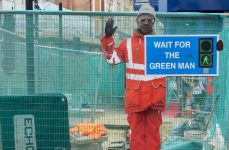Published on the 14/09/2018 | Written by Heather Wright

From city smarts to integrated city-building-vehicle smarts…
From intelligent transport systems, smart bins, smart water metres, smart lighting and IoT networks to digital literacy programs, cities are embracing smarts as a way to enhance livability, workability and sustainability.
Later this month, the inaugural Australian Smart Cities Awards will showcase Australia’s leading examples, with Brisbane, Adelaide, Ipswich, Sunshine Coast and Canterbury-Bankstown all vying for the top prize of Leadership City.
Ipswich, which earlier this year was one of two winners in the administration category of the IDC Smart City Asia Pacific Awards, has built a 100km2 IoT network to support sensor-based data gathering, video analytics, remote asset management and security, with the city also partnering with Queensland’s Department of Transport and Main Roads to run Australia’s largest cooperative intelligent transport system program.
“A more open and converged ecosystem will integrate more deeply.”
Meanwhile Sunshine Coast Council is harnessing smart bins and water meters, parking and sensors to monitor wildlife and waterways with the council’s Smart Region Management Platform receiving data from sensors, streetlights and Wi-Fi access points to manage service delivery in real time.
Deloitte’s Allan Mills says while smart cities initially focused on connecting infrastructure for better insights, the spotlight is slowly shifting to better engaging governments, citizens and businesss, with the goal of providing improved city services and a higher quality of life.
But while cities are continuing the rush to install sensors, collect data and create smart platforms, a recent report by Webb Henderson highlighted a move towards ‘Smart City 3.0’ and more integrated solutions.
The legal and regulatory advisors say over the next five to 10 years major cities will move away from building point solutions and platforms, instead creating ‘a more open and converged “ecosystem” that can integrate more deeply with other technologies in the city, such as smart buildings, autonomous vehicles (AVs) and 5G networks’.
AVs will interact with intelligent traffic flow and smart parking solutions deployed within cities, in Webb Henderson’s scenario, with smart buildings connecting with the city environment.
The report, which says there is ‘significant opportunity’ for Australia to take a leading role in the shift to Smart City 3.0, also highlights the increasing move towards public-private partnership models to share costs, risks and upside between the public and private sector.
It’s a model already in use in many countries, including Barcelona – regularly among the top ranked cities in the Smart City listings. Barcelona is partnering with the likes of Cisco, Philips and Schneider and urban mobility player thyssenkrupp Elevator, whose IoT-powered predictive maintenance solutions have found favour in Barcelona’s subway and airport.
In New Zealand, news of smart city initiatives is more low key. The latest Long-term Plan for Auckland City made no mention of smart cities, though the city’s Safeswim program, which uses data analytics to provide Aucklanders’ with information on water quality at beaches, was a winner in this year’s IDC Smart City Asia Pacific Awards, taking out the smart water category. Auckland City Council was also a finalist in the digital equity and accessibility category for a youth empowerment and civic engagement platform.
Jefferson King, IDC market analyst, says “In recent years New Zealand has been experiencing tremendous population growth in its urban centres, putting strain on infrastructure such as roading and housing. To help cope with these growing pains, cities need to use resources more efficiently and that’s what Smart Cities are all about. Auckland Council is doing just that, with a range of innovative projects that leverage technology to provide positive social outcomes.”
But Auckand’s lack of reference of smart cities in the long term plan doesn’t mean it’s out of the race.
As we reported earlier this year, the city is mapping out a future heavy in analytics and smarts, with a new system – the Smart Growth Portal – to improve decision making around infrastructure.
Wellington City meanwhile has pushed its smart city status for a number of years – it instigated a ‘smart capital’ plan back in 2011 – with technologies including CCTV software to monitor traffic for asset management, real-time visualisation of city operations and a city-wide sensor network, using NEC’s Kite Flexible Sensing Platform.
Earlier this year the New Zealand Transport Agency announced plans to begin installing smart LED lighting on Wellington’s state highways in an effort to improve driver safety, reduce road crime and reduce electricity costs.
Here’s hoping their LED experience is better than Auckland’s, where LED lights are on the blink – effectively becoming strobe lighting across Auckland’s Southern Motorway (itself something of a disaster zone thanks to long delays in its ongoing upgrade work) recently – left some motorists wishing for good, old fashioned sodium lights – or perhaps even gas lights.
Now, if we could just turn those smarts to solving the Auckland motorway issues…



























